Transcriptomic and spatial organization of telencephalic GABAergic neurons
- PMID: 41193843
- PMCID: PMC12589142
- DOI: 10.1038/s41586-025-09296-1
Transcriptomic and spatial organization of telencephalic GABAergic neurons
Abstract
The telencephalon of the mammalian brain contains multiple regions and circuits that have adaptive and integrative roles in a variety of brain functions. GABAergic neurons in the telencephalon are diverse; they have many circuit functions, and dysfunction of these neurons has been implicated in various brain disorders1-3. Here we conducted a systematic and in-depth analysis of the transcriptomic and spatial organization of GABAergic neuronal types in all regions of the mouse telencephalon and their developmental origins. This was accomplished using 611,423 young adult single-cell transcriptomes and 614,569 single-cell transcriptomes collected from multiple prenatal and postnatal developmental timepoints. We present a hierarchically organized adult telencephalic GABAergic neuronal cell-type taxonomy of 7 classes, 52 subclasses, 284 supertypes and 1,051 clusters, as well as a corresponding developmental taxonomy of 1,688 clusters across ages from embryonic day 7 to postnatal day 14. Detailed charting efforts reveal extraordinary complexity whereby relationships among cell types reflect both spatial locations and developmental origins. Transcriptomically and developmentally related cell types are often found in distant and diverse brain regions, indicating that long-distance migration and dispersion is a common characteristic of nearly all classes of telencephalic GABAergic neurons. Moreover, we find various spatial dimensions of both discrete and continuous variation among related cell types that are correlated with gene expression gradients. Lastly, we find that cortical, striatal and some pallidal GABAergic neurons undergo extensive postnatal diversification, whereas septal, preoptic and most pallidal GABAergic neuronal types emerge in a burst during the embryonic stage with limited postnatal diversification. Overall, the telencephalic GABAergic cell-type taxonomy will serve as a foundational reference for molecular, structural and functional studies of cell types and circuits by the entire community.
© 2025. The Author(s).
Conflict of interest statement
Competing interests: H.Z. is on the scientific advisory board of MapLight Therapeutics. The other authors declare no competing interests.
Figures









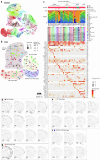

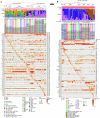

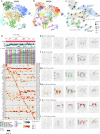






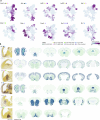
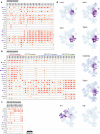

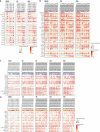


Update of
-
The transcriptomic and spatial organization of telencephalic GABAergic neuronal types.bioRxiv [Preprint]. 2024 Jun 18:2024.06.18.599583. doi: 10.1101/2024.06.18.599583. bioRxiv. 2024. Update in: Nature. 2025 Nov;647(8088):143-156. doi: 10.1038/s41586-025-09296-1. PMID: 38948843 Free PMC article. Updated. Preprint.
References
-
- Swanson, L. W. Brain Architecture: Understanding the Basic Plan (Oxford Univ. Press, 2012).
MeSH terms
Grants and funding
LinkOut - more resources
Full Text Sources

